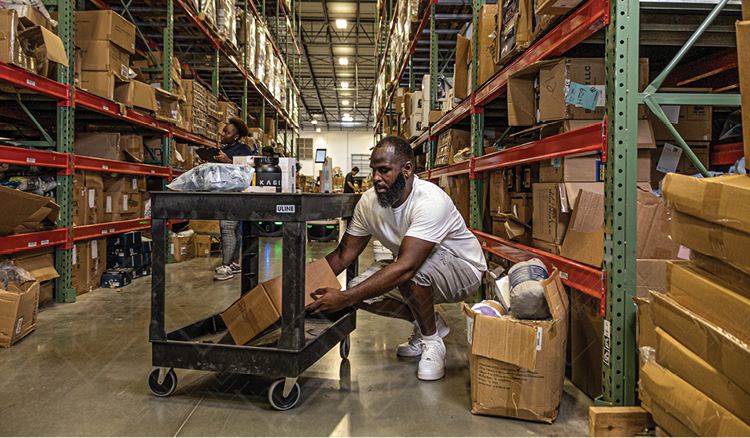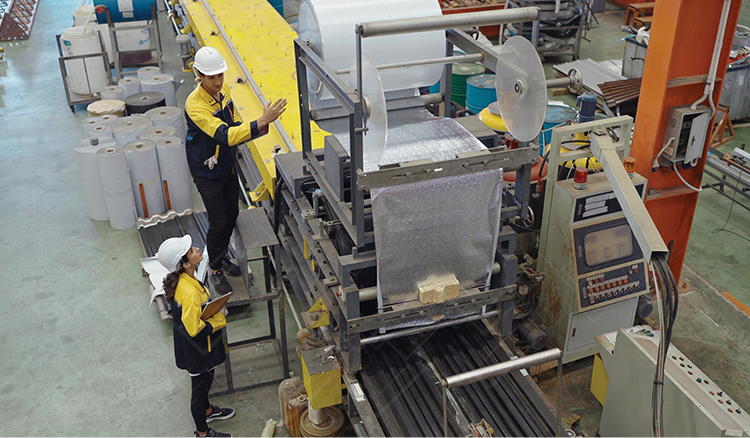How to Handle Demand Spikes in Manufacturing and Logistics
It’s something manufacturing leaders dream about: one day, a huge order comes in for your products, and you’ll be sitting on a gold mine once you ship everything out to your happy customers. Depending on how prepared your company is to handle the spike in demand, this could sound like a good dream or a nightmare. At Veryable, we know how difficult handling demand spikes can be. We work with companies who see their demand suddenly grow often enough that they need a way to respond. Our on-demand labor platform connects companies with workers who are available quickly for short periods of time to get through demand spikes. Although labor constraints are a big thing that holds companies back from managing demand changes well, there are other constraints that warrant a discussion as well.
In this article, you will learn how to handle demand spikes in manufacturing or logistics by responding quickly to the situation.
Steps for handling spikes in demand
- Communicate with line leaders and upper management
- Assess your team and identify workers who can keep pace
- Focus production on in-demand items
- Increase uptime if needed
- Deliver products incrementally
- Recognize workers for their efforts
1. Communicate with line leaders and upper management
The first step you should take when facing increased demand on short notice is to communicate with line leaders and upper management. Get their input on how you can meet the challenge at hand, and explain to them how important it is to you and the business that you collectively succeed in this effort. You can strategize together on the best way to approach the situation, and the team will give you an idea of whether or not you’re currently prepared to handle the demand spike. From discussions like this, you might get some great ideas that you never would have known if you were just thinking through it by yourself. Plus, getting your team’s input makes them feel like a valuable part of the company and they might be more likely to commit the extra effort required to rise to the occasion.
2. Assess your team and identify workers who can keep pace
As you move forward and start making changes to meet the sudden increase in demand, you will need good workers who can get the job done consistently. For this reason you will need to identify who your star players are and make sure they have what they need to perform at their peak. Incentives might help get your best workers to commit to working overtime to help you fill orders. However, if this doesn’t work or would be too costly, you might need to find more workers somewhere else to help fill the gaps. You could hire more workers yourself or try temp staffing, on-demand staffing, or on-demand labor as means of getting the hands on deck that you need. Each of these will have their own drawbacks and benefits, but all of them would likely be quicker than trying to find enough workers by yourself.
3. Focus production on in-demand items
If this spike in demand is for products that are profitable enough to be worth the extra effort, you should focus as much of your production on these in-demand items as possible. This is where communication with your team will be helpful again, because they are closer to the production processes and can help you identify creative ways to accomplish the extra production. Delay any projects you can push off, like receiving materials you could do without for a while. Ensure there’s no waste in your process so that you’re not putting any focus into processes that don’t add value, and instead can focus on getting those in-demand items out. One popular methodology for honing your processes is Lean.
4. Increase uptime if needed
Now that you have some ideas about how to increase production at your disposal, you know whether or not increased uptime will be necessary. You should track how you are progressing toward your goal by assessing your progress daily. If you do find that you need to operate for longer hours to achieve the increased production for those in-demand goods, keep in mind that there may be monetary and non-monetary costs associated with that. Pushing employees to work too much overtime can lead to burnout and increased turnover. Have a plan for avoiding overtime and keeping your turnover low while you handle the demand spike, or bring in extra workers as mentioned in the previous step.
5. Deliver products incrementally
As you finish products, remember the journey your product takes to the customer and consider whether the next step of the supply chain can handle a huge shipment of your goods. For example, if you are shipping to a retailer, they might have limited shelf space for your products and therefore cannot handle a truckload when the store is accustomed to receiving just a small amount of your product. Just because you can push it out doesn’t mean the recipients have somewhere to put it.
6. Recognize workers for their efforts
After all the hard work is done, you should celebrate the people who helped you make it happen. Recognizing your workers can go a long way toward making the company a better place for everyone. Aside from being a kind thing to do, this has tangible impacts on your business in the form of loyalty and improved productivity. One study found that happy workers expend more effort at work, and another study found that happy workers are 13% more productive. Recognizing workers is a win-win.
Bringing on extra workers for demand spikes
Historically, businesses have turned to temp staffing in a pinch to find workers. This is a solution that has left many leaders frustrated at the problems with temp staffing, and is not the most cost-effective way to find workers. A new solution for bringing in extra help during demand spikes is on-demand labor. This model could save your company time and labor costs during these busy seasons. When you use on-demand labor to build up a labor pool of people ready to work, you are ready for anything. Read more about building a labor pool and how it could prepare your company to capture the increased revenue potential from demand spikes.
Previous Posts
How Policy Constraints, Not Just Production Bottlenecks, Threaten Your Bottom Line
The Future of Manufacturing and Logistics
Create a free business profile today to explore our platform.






